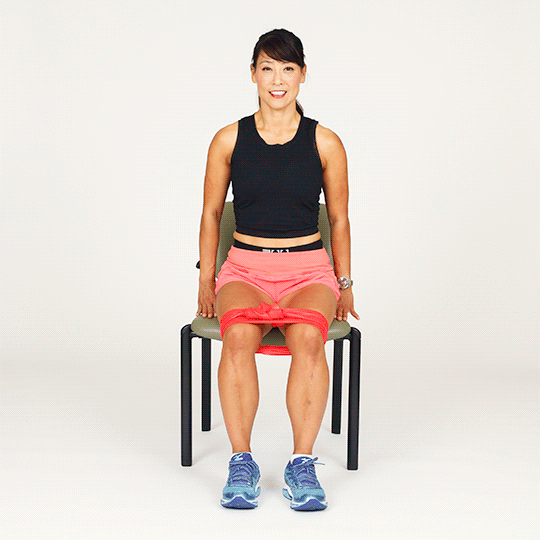The hip is the second-largest joint in the human body (after the knee). It’s a ball-and-socket joint; the “ball” is the head of your femur (thigh bone) and the “socket” is the acetabulum of the pelvis. Several muscles in the front of your hip are collectively called the hip flexors.

If you feel tightness or stiffness in your hip flexors, you’re not alone. Many of my older clients say they have tight hip flexors. Symptoms of tight flexors include feelings of discomfort in the front of the hip. This discomfort typically worsens if you move your leg toward your chest or behind your body. Not surprisingly, your first response is to stretch this muscle group as often as possible. Unfortunately, the issue isn’t that simple. In some cases, performing stretches to target hip flexors can even make the problem worse.
There are many causes of tight hip flexors. Here we’ll discuss the three most common and how to fix them (hint: it doesn’t involve stretching!)
Cause #1: Anterior Pelvic Tilt
A common postural and muscular imbalance, anterior pelvic tilt is a condition in which the pelvis is tilted toward the front of the body. What that means is a more pronounced curve in the low back (often leading to low-back pain) as well as weakened core muscles. This position also shortens the hip flexor muscles, leading to tightness that can’t be alleviated with stretching. To start correcting anterior pelvic tilt, I get my older clients to start pay attention to their posture. This isn’t something to focus on only while exercising; it’s an ongoing, conscious focus throughout the day.
Posterior Pelvic Tilt Against a Wall

Bright Photography
Stand with your back against a wall, with your head, upper back, and glutes touching the wall. Your feet can be positioned a few inches in front of the wall. Now exhale and flatten your low back against the wall so there’s no space between it and the wall. Your pelvis is performing a posterior tilt (the opposite of anterior tilt) and you should feel your abdominal muscles and glutes engaging. Hold this position for about 10 seconds, then release. Try to create this posterior tilt position as you go about your daily activities.
Cause #2: Weak Glute Muscles
When the glutes are weak or don’t function properly, the muscles in the front of the hip tend to take over, which can lead to hip flexor tightness. The fix here isn’t stretching the hips — it’s strengthening the glutes. Try this exercise to activate the gluteus medius; an important outer glute muscle. Use it as a warm-up before other activities, and throughout the day to activate the glute muscles, especially if you spend much of your time sitting. For older adults who have had hip replacements, this is a common exercise to perform as part of the recovery process.
Mini-Band Clam Shells

Sit on a chair or bench with your feet together, knees bent at 90 degrees and a mini-band looped around your legs, just above the knees. Brace your core muscles, and move your knees out to the side as you exhale. Try to feel your outer glutes working. Slowly bring your knees back to the starting position and repeat for repetitions. Aim for 3 sets of 15 controlled repetitions.
Cause #3: Weak Abdominal Muscles
When the abdominal muscles aren’t working effectively, the psoas (one of the main hip flexor muscles) picks up the slack. If this is the case, aggressively stretching the hip flexors isn’t going to fix the problem (and, in fact, may worsen it). Instead, working on core strength and stability is a must. I use variations of this core exercise with all of my clients, from beginners to elite athletes, regardless of age. This move works the true function of the core: resisting motion, not creating it. You’ll learn how to create rigidity throughout the trunk and hips, while incorporating the posterior pelvic tilt from above.
Plank “Alphabet”

Start in a plank position with your toes on the floor and forearms centered on the stability ball. Ensure your shoulders are stacked directly over your elbows. Brace your core muscles (like you’re about to get punched in the stomach) and keep your entire body rigid as you start drawing out large capital letters with your forearms. Don’t make your letters so large that your body moves side to side, but make them large enough so that if someone were watching you, they’d know what letters you were drawing. Your challenge: draw the entire alphabet in one go.
Trainer’s Tip
If you’re experiencing ongoing hip flexor tightness, sharp pains, or limited range of motion, I suggest seeing a physical therapist for an assessment. This way you can get customized solutions and exercises tailored to your specific concern. Also, try these three exercises to increase mobility in your hips.



